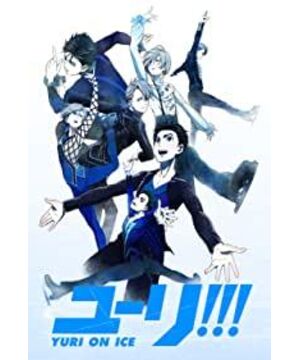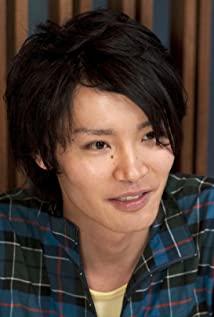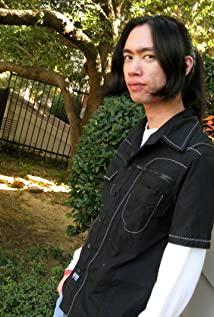Regarding "Yuri on Ice" (hereinafter referred to as "Ice"), a Japanese animation work considered by many Western audiences to "save 2016", there have been many detailed analyses at home and abroad. For this animation on a not-so-popular subject (men's figure skating), the detailed analysis enthusiastically provided a lot from various aspects - skating style, music arrangement, character interaction, etc. Sophisticated reviews. Here, I can only say superficially about my very crude view of this "simple and refined" work. At the beginning of his book "Thus Spoke Zarathustra", the German philosopher Nietzsche described the prophet Zarathustra coming down from the mountain and told people about the three metamorphoses of the spirit, that is, from camel to lion to child . We can probably also understand this as three forms of "spirit" at different times. In my opinion, the story of "Ice" depicts a different form of another core human concept: the form of love and its transformations. The theme of love is the object of countless creations in ancient and modern times, and it is also a concept that almost everyone can understand and be familiar with. Therefore, "Ice" is a "simple" story in my opinion. However, apart from the direct dialogue and interaction between the characters, a large number of symbols and metaphors used in the animation serve the different forms of love and the transformation between these forms. The delicate techniques, tactful overlapping, and interactive kneading make people feel that it is very "exquisite". It is indeed a very carefully written work. At the end of the fifth episode of the anime, the protagonist, Japanese skater Yuuri, chose the word "love" to represent his theme for the upcoming season, which is a metaphor for the theme of the anime. In my opinion, the form of the theme of love in "Ice" can be explained by the three interlocking concepts of "missing" - "love" - "self-sacrifice". Strictly speaking, "missing" and "self-sacrifice" are not equivalent to "love", but we can understand them broadly as two forms of "love" (first and last). In my opinion, this animation contains artistic elements, one of the reasons is that it does not bluntly instill the essence of "love" into the audience, or does not express or imply that everyone understands "love" in essence, It is to feel "love" in the form of "love". This sensibility is characteristic of all good art. When it comes to the form rather than the essence of "love", what we intuitively perceive is not a limited conceptual object, but a flowing deformation perception. Interestingly, when Yuuri explained why he chose "love" as the theme, he admitted that he could not express what it was, but could only understand it abstractly. When asked the other protagonist, Victor, what is "Agape" (the so-called "unconditional love", which will be discussed below), Victor said that it is a kind of feeling that can only be comprehended and cannot be expressed. Because the form of "love" is fluid, words cannot express it most accurately, and here I just use the combination of "missing" - "love" - "self-sacrifice" to describe it. To understand the flow between the three forms of "love" above, you can borrow the concept of "limit" or "gradual behavior" in mathematics. The "missing" here simply means that one person misses another person, and it is the state where A wants to get close to B. The limit of this state is "love". The "love" here is the state after two people get along, and the perfect form after the "missing" is reached, but this form does not stop there, but continues to evolve, and finally reaches the limit of "love", that is "Self-sacrifice". The concept of "self-sacrifice" objectively cancels the possibility of getting close and getting along, and in form it seems to be a deviation from the previous stage of "love", but it is still the limit of "love" and is based on the premise of "love". The result of achievement is therefore not a sacrifice of nothingness, but a sacrifice of contentment. After this, the limit of "self-sacrifice" is the rediscovery of "missing", so the change of "love" in its form (the deformation of "love") is essentially a circle. When we look at the relationship between the characters in "Ice" with the transformation of "love", we can't help but talk about an important plot, that is, two pieces of music that Victor chose for Yuuri and Yuri to change from the same piece of music: "Eros" and "Agape". In the second episode, Victor gave Yuuri the song "Eros", which represented the theme of "sex", and Yuri's "Agape", which represented "unconditional love." If we understand these two variations in terms of the deformation of "love", then it is easy to see that "Eros" represents the flowing form of "love" that is the ultimate in "missing" and appeals to sex, while "Agape" It is a kind of unconditional love (in Victor's words, it even represents the love of God), and it is easy to imagine that the latter kind of "love" naturally contains the concept of "self-sacrifice". Therefore, through Victor's choice, the work "Ice" subtly and subtly uses Yuuri, Victor and Yuri to symbolize the three types of love, "missing", "love" and "self-sacrifice", and through The transformation of the three-person relationship symbolizes the flow of love in form. Victor, the world's top skating player, has been shown many times in the animation that he cannot continue to surprise the audience because of his great talent. This near-perfect image of genius can be seen as the perfect image of "love". However, because "love" cannot be stagnant but can only change, he has anxiety and hopes for a change. Yuuri's admiration for Viktor ("missing") has grown since he was a child, and the desire to be close to Viktor has only grown stronger after Viktor volunteered to be his skating coach. For "Eros", Yuuri has already understood it as a woman's flirting and seduction of a man, which can be said to be the ultimate "missing". However, at the end of the animation, Yuuri was worried that Victor would waste his skating talents by becoming his own coach, and then proposed a plan for the two to separate, which is precisely the change from "love" to "self-sacrifice". As for Yuri, he took it from his grandfather's handling to selfless love and giving, and took it as his own understanding of the "Agape" state of mind. However, after all, Yuri is a young man full of heat. It is impossible for him to remain in a selfless and detached state. From the psychological activities of his game in episode 12, it can be seen that he is inspired by Yuuri's possible retirement ("self-sacrifice"). He showed great fighting spirit, and he longed for Yuuri not to retire. This of course reflects the belligerent character of the young man, but abstractly speaking, it does return to the rediscovery of "missing" (that is, the desire for others). Then we can see that the changes in the relationship between the above three people are the circle formed by the three interlocking deformations of "love". Regarding such a circle of "love", there are many others in "Ice". For example, in the first episode of the animation, when Yuuri imitates Victor skating on the empty skating rink in his hometown, Victor is mixed with the same set of moves during the official competition. This is the scene that moved me so much that I watched the entire animation, because it is the very concrete expression of the indescribable meaning of "missing". In different time and space, a person's whole-hearted imitation of another person (lonely and silently), isn't this the culmination of "missing"? And at the end of the twelfth episode of the final episode, the scene of skating that made countless viewers cry is exactly the response to the one-person imitation in the first episode, and makes the whole animation a circle, which is really wonderful! While the desire for a second season of the anime seems promising, I sometimes feel that the finished anime might be artistically and aesthetically self-consistent as well. Regarding the different forms of "love", the work "Ice" also interprets it from many different angles. If we say that the above "missing" - "love" - "self-sacrifice" is a variant of "love", then "Ice" also provides many variants of the same type of "love". For example, sex is also explained through skating dances. In addition to Yuuri, there is also a Swiss player Christoph. From the reactions of many viewers who watched the animation "Ice", Chris is a character who overemphasized his masculine charm and even made the audience a little disgusted. This may be due to his gestures, The reason why the love between gay men, which was already relatively obvious in the animation, has become more public. However, I have always been full of sympathy for him, not for the weak, but for his role as "love". I don't know if the author did it on purpose or not, but most of Chris's appearances are in the middle of two climaxes -- the two climaxes refer to the more popular characters that appear before and after him. So it seems to me that Chris takes on a kind of role as the object of people's emotional catharsis. While people were mocking and sarcastic about him, the hostility towards Yuuri and Viktor's same-sex love diminished. It can be said that Yuuri, who is (from a certain perspective) a metamorphosis of the same type of "love" -- in this case, an expression of same-sex sexuality -- is psychologically accepted by more people because of Chris' existence. I have no intention of questioning this kind of character handling, on the contrary I even doubt that this is the best kind of characterization, however without the plot of the story, without the growth of our relationship with Yuuri and Victor, the expressiveness of being a spectator from skating Looking at it, I suspect that Chris is even more expressive than Yuuri on the subject of sex. Judging from Chris's various psychological activities during the game, as well as his attitude towards others and his own performance, Chris is undoubtedly a person worthy of respect. An example of a variant of the same type of "love" is that each character possesses a symbol of love. Many characters in the animation have the habit of keeping pets, and Victor's dog is even an important element to advance the plot (episodes 8 and 9). Even if there are no pets, such as American player Leo's music preferences, or Chinese player Ji Guanghong's cute image (the curtains in the window of his room are pink and there are heart patterns on the wall), or the Italian skating brother and sister Emotions are projections of each person's love in his private life. Although this kind of love symbol is only a secondary component in the animation, it clearly shows the ties of different characters to "love". As an excellent animation, there are many direct and indirect descriptions of the form of love in "Ice", and many comments have also been analyzed, so I won't talk about them one by one here. "Ice" is not perfect either. For example, in my opinion, some of Victor's intimacy with Yuuri in the early days was a little too strong, and for example, the characters of many characters in the animation were created too naive and simple. However, these shortcomings may be understandable for this work with only twelve episodes and a compact and intense plot. Comments and experiences may impress curious and interested people, but I still hope that more audiences who are hopeful about the form and possibility of love can personally walk into the animation and experience this "everything is love" story on ice. 2016.12.24
View more about Yuri!!! On Ice reviews











